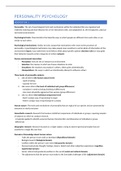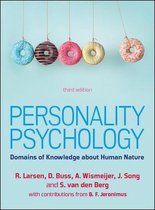Summary
Samenvatting Personality Psychology, ISBN: 9781526847874 personality psychology
- Course
- Institution
- Book
Summary Personality Psychology, English (difficult words explained in Dutch). Chapters 1, 3, 4, 5, 8, 9, 10, 11, 12, 13, 14, 15, 16 (pp. 412 to 423), 17 and 18.
[Show more]




